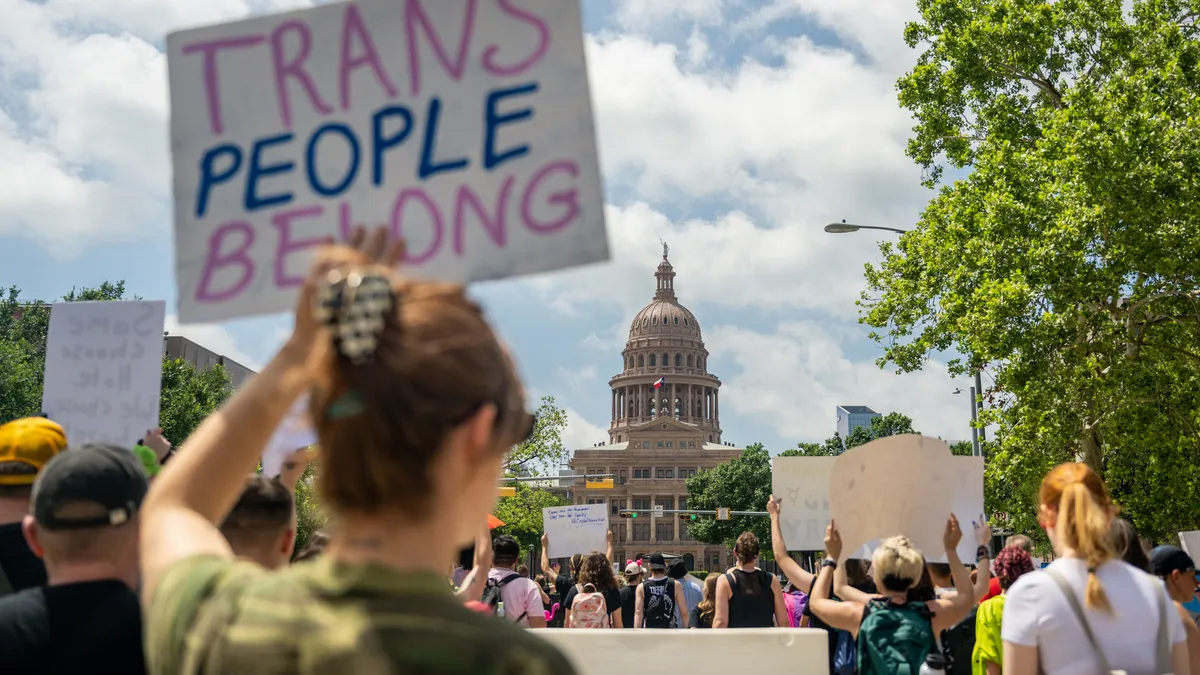Dive Brief:
- Two in 5 LGBTQ+ young people report a history of food insecurity, houselessness or unmet basic needs, according to a Trevor Project survey released Wednesday.
- Transgender and nonbinary young people were over 70% more likely to experience food insecurity and houselessness — and 67% more likely to have unmet basic needs — compared to cisgender lesbian, gay and bisexual people.
- Food insecurity, homelessness and unmet basic needs among LGBTQ+ youth were all linked to higher chances of anxiety, depression and suicidal ideation and attempts.
Dive Insight:
Alongside previous Trevor Project research, this latest data further illustrates how the mental health of LGBTQ+ young people has declined in the past few years.
According to a May 2024 report, LGBTQ+ youth mental health has been impacted by the spread of anti-LGBTQ policies nationwide, with 90% of LGBTQ+ youth saying their well-being was negatively impacted due to recent legislation. That’s compared to just 66% the year before who said that hearing about potential local or state laws worsened their mental health.
Likewise, a separate August 2024 report from the Trevor Project showed that nearly a third of LGBTQ+ secondary and postsecondary students ages 13 to 24 said they attended a school with at least one anti-LGBTQ+ policy, like curriculum restrictions on gender and identity issues.
Despite the array of challenges that LGBTQ+ youth are facing, mental health access for this student group remains a challenge. About half of LGBTQ+ students said they wanted mental health care but were unable to receive it, per the May 2024 report.
The latest survey shows that while mental health care is important, it's not the only factor to LGBTQ+ student success.
"While there will always be a place for mental health care, targeting upstream determinants like economic security is a necessary part of any public health strategy that prioritizes mental health and suicide prevention," the April 2025 report said.
The Trevor Project surveyed 18,663 LGBTQ+ people ages 13 to 24, and a sample size of 16,869 participants was used for the final results.













